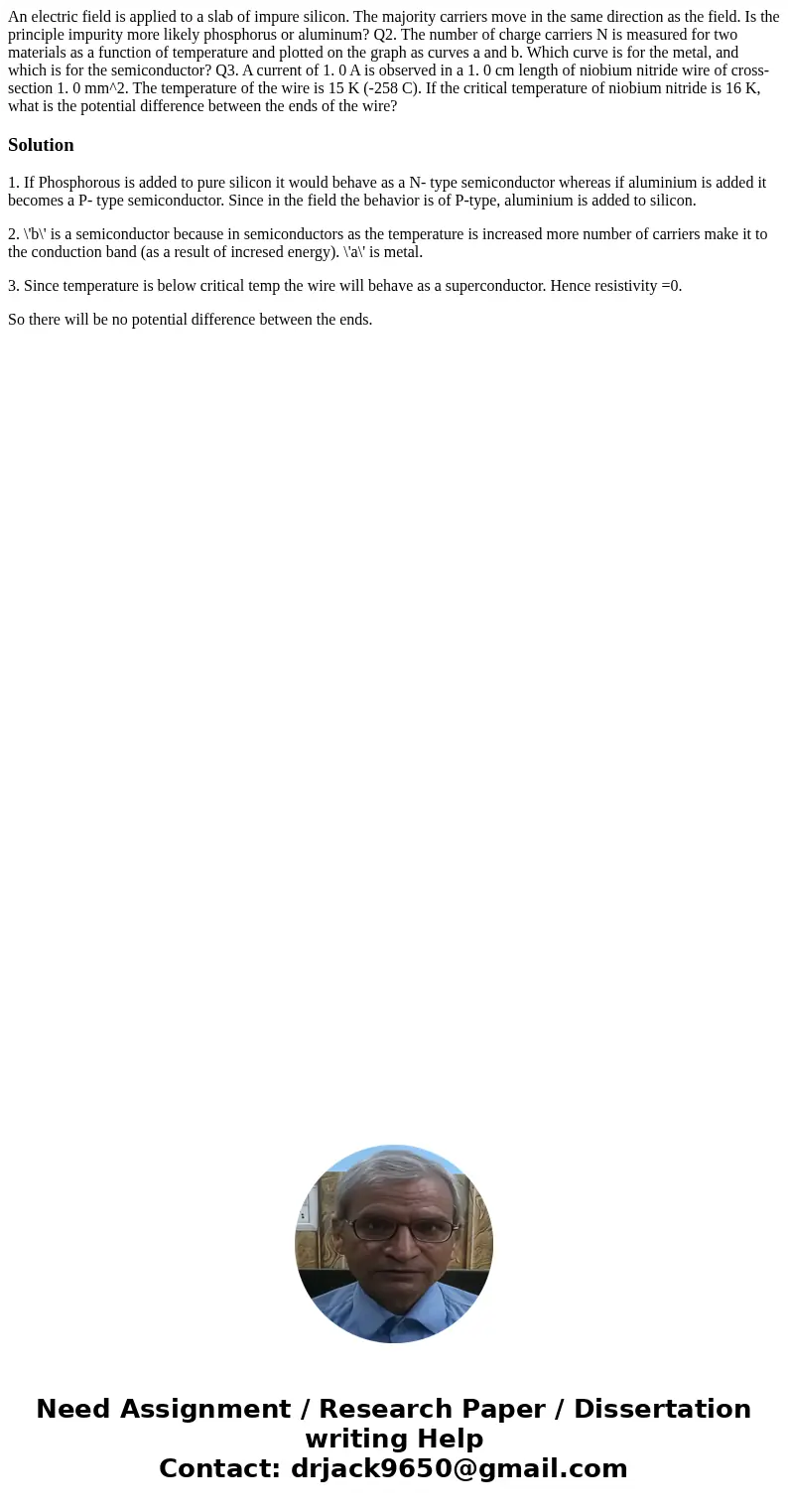An electric field is applied to a slab of impure silicon The
An electric field is applied to a slab of impure silicon. The majority carriers move in the same direction as the field. Is the principle impurity more likely phosphorus or aluminum? Q2. The number of charge carriers N is measured for two materials as a function of temperature and plotted on the graph as curves a and b. Which curve is for the metal, and which is for the semiconductor? Q3. A current of 1. 0 A is observed in a 1. 0 cm length of niobium nitride wire of cross-section 1. 0 mm^2. The temperature of the wire is 15 K (-258 C). If the critical temperature of niobium nitride is 16 K, what is the potential difference between the ends of the wire?
Solution
1. If Phosphorous is added to pure silicon it would behave as a N- type semiconductor whereas if aluminium is added it becomes a P- type semiconductor. Since in the field the behavior is of P-type, aluminium is added to silicon.
2. \'b\' is a semiconductor because in semiconductors as the temperature is increased more number of carriers make it to the conduction band (as a result of incresed energy). \'a\' is metal.
3. Since temperature is below critical temp the wire will behave as a superconductor. Hence resistivity =0.
So there will be no potential difference between the ends.
 Homework Sourse
Homework Sourse